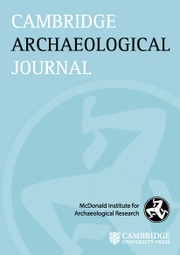Article contents
Architecture, Materialization and the Duality of Structure: a Maya Case Study of Structurally Shaped Innovation
Published online by Cambridge University Press: 22 May 2013
Abstract
This article addresses the problem of structural determinism in archaeological explanations of material culture change, specifically architecture. A discussion of Giddens' structuration theory emphasizes the duality of structure. The concept is updated by drawing on Gell's theory of agency in art and recent ideas on play, innovation, freedom and consensus prevalent in anthropology and archaeology. This approach shows that material culture is changed through structurally shaped innovation, such that agency is distributed across time, among groups regionally and among elites and commoners. The theoretical exposition develops a case study including discussion of an architectural grammar, ethnohistoric analogy and activity-area studies involving ceramic incense burners. The case study is the Classic–Postclassic transition (ad 750–1200) among the Maya of Petén, Guatemala. While earlier explanations of architectural change in this region focused on an in-migration event, the current investigation posits a Postclassic reconfiguration of Maya architecture, specifically changes in ‘C’-shaped stone benches, based on structurally shaped innovation and a distributed view of agency. The benches served as stages for more heterarchical ritual performances with the incense burners as opposed to the hierarchical ritual performances common in the Classic period. This account overcomes structural determinism by allowing for diversity and cultural specificity in our views of agency.
- Type
- Articles
- Information
- Copyright
- Copyright © The McDonald Institute for Archaeological Research 2013
- 6
- Cited by


